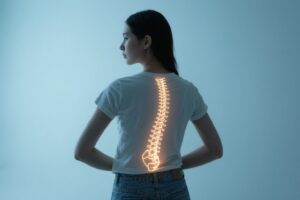
Back pain is one of the most common complaints seen by healthcare professionals and experienced by individuals across all age groups. However, not all back pain is the same. One of the key distinctions that determines the correct approach to treatment is whether the pain is acute or chronic. Understanding the difference between the two is essential for selecting the most effective path to recovery and long-term relief.
Acute back pain typically appears suddenly and is often the result of an identifiable injury or strain. It may be caused by lifting something too heavy, an awkward movement, a fall, or even poor posture over a short period.
Key characteristics of acute pain:
Sudden onset
Usually lasts a few days to a few weeks
Often linked to a specific incident or movement
Responds well to rest, ice/heat therapy, and short-term pain relief
In many cases, acute pain resolves on its own or with minimal intervention, provided proper care is taken in the early stages.
Chronic back pain persists for 12 weeks or more, even after the initial injury or cause has been treated. It may develop slowly over time and isn’t always linked to a specific event. Often, it is the result of underlying structural issues, such as degenerative disc disease, herniated discs, or postural dysfunction.
Common features of chronic pain:
Lasts for more than 3 months
May come and go or remain constant
Less likely to be resolved through rest alone
Often linked to lifestyle factors or spinal imbalances
Chronic pain usually requires a comprehensive, long-term approach that may include physical therapy, spinal decompression, exercise programmes, and lifestyle modifications.
The distinction between acute and chronic pain is not just about duration, it affects how you manage your symptoms and avoid long-term complications.
Treating acute pain as chronic may result in over-treatment, while failing to address chronic pain correctly may lead to recurring flare-ups, reduced mobility, and diminished quality of life.
Rest for short periods, but avoid prolonged inactivity
Use ice packs or heat therapy as appropriate
Gentle stretching and movement
Over-the-counter anti-inflammatories if advised by a doctor
Temporary postural support or lumbar belts
Identify and address the root causes (e.g., muscular imbalances, disc issues, poor posture)
Develop a tailored exercise and strengthening plan, focusing on the core and spinal muscles
Consider spinal decompression therapy to relieve pressure on compressed discs or nerves. A home-use device like the Spinal Backrack offers targeted decompression and supports recovery without medication
Work with a physiotherapist, chiropractor or osteopath for manual therapy and guidance
Incorporate lifestyle changes such as ergonomic adjustments, stress management, and anti-inflammatory nutrition
Understanding whether your pain is acute or chronic also allows you to take preventive measures. Acute injuries can become chronic if not properly managed, while chronic conditions can be minimised or even reversed with consistent care and the right tools. Using at-home solutions like spinal decompression devices can help maintain spinal health between professional treatments and reduce the risk of re-injury.
Knowing the difference between acute and chronic back pain is the first step towards choosing the right treatment and regaining control of your health. While acute pain often resolves quickly, chronic pain requires a more structured and proactive approach. By combining professional guidance with effective home-based therapies, like decompression and targeted mobility work, you can break the cycle of pain and support your spine’s long-term well-being.






Sign up our newsletter to get article update about backrack therapy.